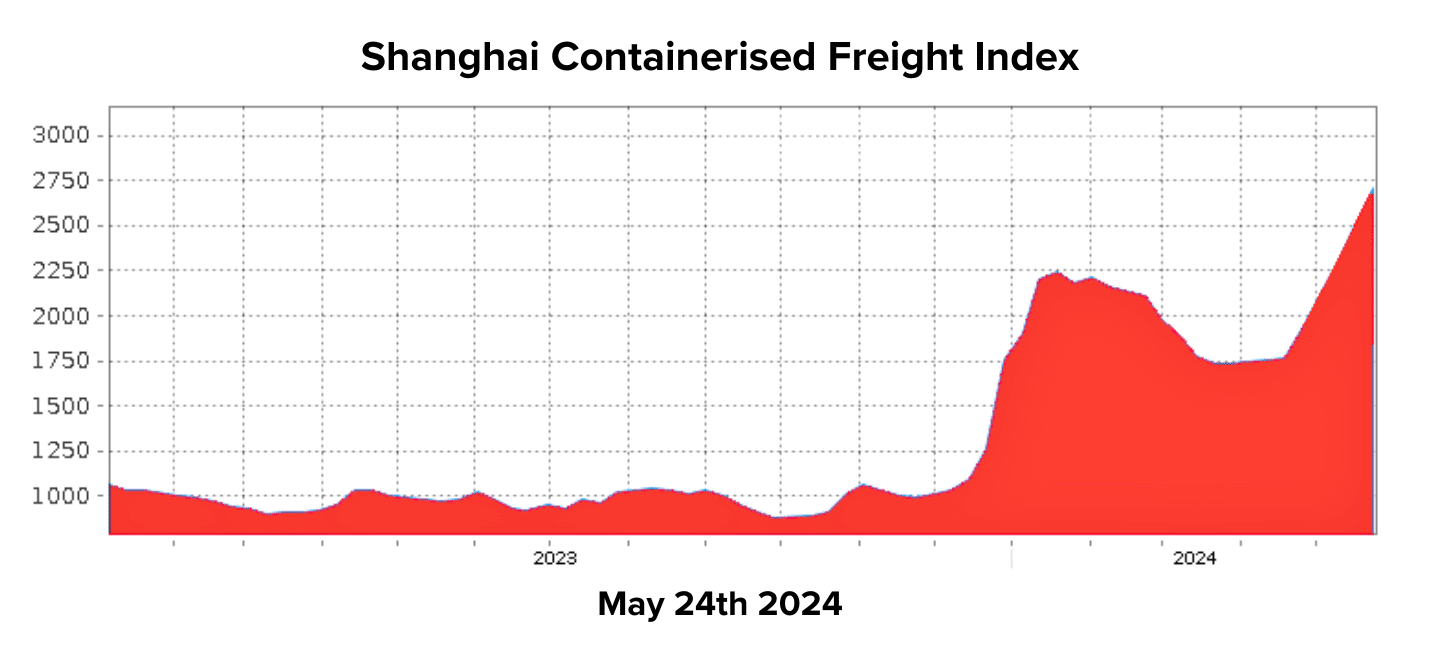Wearing and tearing on horse joints in activities like racing, jumping, and heavy work, can result in arthritis or inflammation. Oral joint supplements are often used to support cartilage health, reduce inflammation and improving joint fluid.
Glucosamine and chondroitin sulphate
These two supplements usually work synergistically to help prevent cartilage breakdown and support joint elasticity.
There are three forms of commercial glucosamine: glucosamine hydrochloride, glucosamine sulphate and N-acetyl-D-glucosamine (NADG). Glucosamine hydrochloride is the most stable form and more effective to prevent the degeneration of cartilage. It is usually recommended that 12 grams of glucosamine and 2-6 grams of chondroitin per day in a 600 kg horse.
- Methylsulfonylmethane (MSM) – MSM is an organic source of sulphur, an element important for the muscle, joints, cartilage, and bones. MSM has antioxidant properties and anti-inflammatory properties. It is usually recommended that 12 grams of MSM per day in a 600 kg horse
- Yucca extract – Yucca is an herb commonly used in equine oral joint supplements due to its anti-inflammatory, antioxidants, and antispasmodic properties, in particular to alleviate the pain and discomfort which occur because of arthritis, bone and joints problems, and soft tissue swelling. It is usually recommended that 20 grams of yucca extract per day in a 600 kg horse.
- Type II-Collagen (UC-II) – UC-II is one of the major connective tissues which gives the joints resilience and support. Undenatured UC-II is better than the denatured form for horses with arthritis. It was recommended that 100 mg of active UC-II per day in a 600 kg horse.
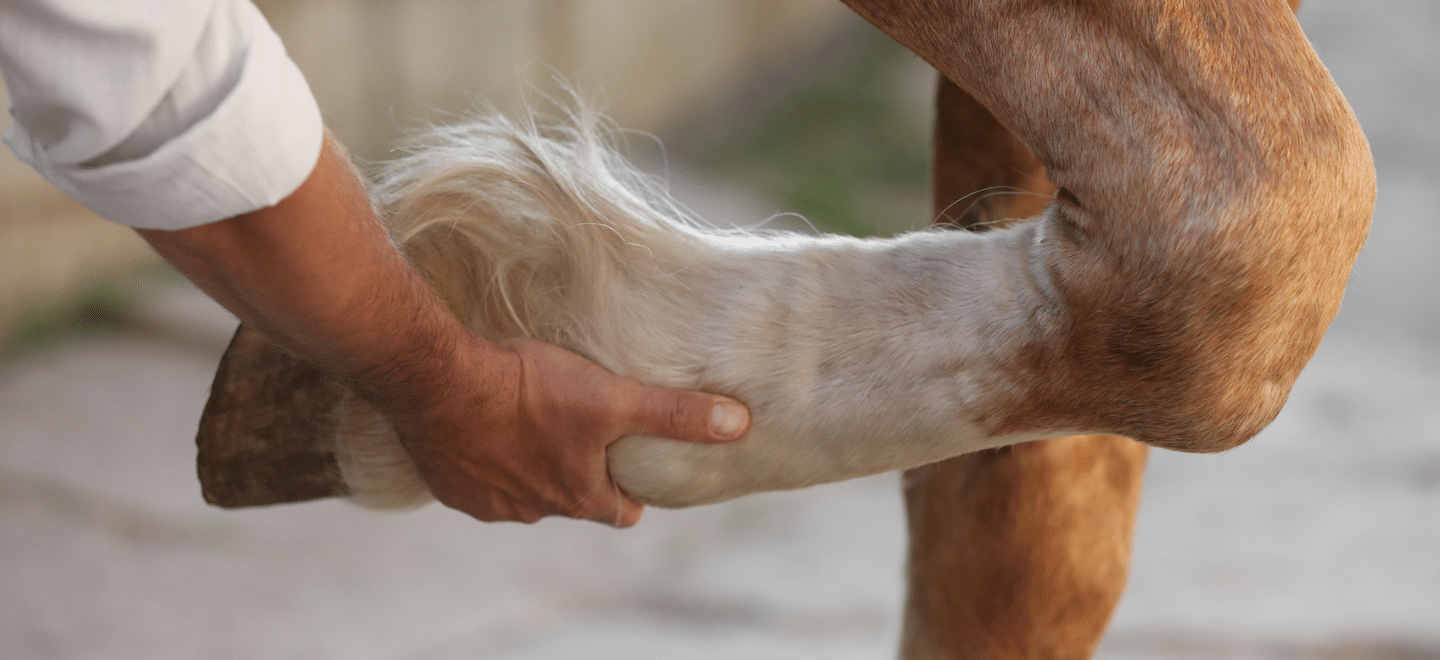
Activities such as racing, jumping, and heavy labor can lead to joint wear and tear in horses, often causing inflammation or arthritis.
A study compiled by our Redox Animal Nutritionists.
Broiler chickens are one of the most efficient production animals in terms of growth rate and feed conversion ratio (FCR). In Australia, 700 million broiler chickens have been produced each year. Compared to other meat production, the production of chicken meat has relatively low environmental impact and broiler chicken feeds contribute to 70% carbon footprint of chicken production.
Feed ingredients for broiler chickens mainly consist of wheat, soybean meal, canola meal and faba beans. Based on the current life cycle assessment, wheat is considered to contribute to 45% carbon footprint of chicken feed and soybean meal contributes to 37% carbon print of chicken feed (Table 1). Beyond L-Lysine, L-Methionine and L-Threonine, adding L-Valine, L-Isoleucine and L-Arginine may further reduce 1.5%-unit crude protein levels by replacing soybean meal with wheat and faba beans, allowing approximately 70 kg CO2 eq/kg reduction.
If we consider the effect of phytase, xylanase and protease on climate change (Table 2) and switching from DL-Methionine to L-methionine, another 43kg CO2 eq /kg reduction will be expected, totally about 13.7% reduction (823 vs.710 kg CO2 eq/kg).

Soybean meal contributes 37% to the carbon footprint of chicken feed, while wheat accounts for 45%.
Recently it is noticed that replacing soybean meal with wheat or faba beans will significantly increase dietary Xylan concentration, resulting in reduced lipid digestibility and chicken performance. Although supplementation of exogenous bile acid did not improve lipid digestibility, it significantly reduced mortality rate by 2% unit due probably to reduced endogenous loss of taurine.
In addition, when removing antibiotics as the growth promoter, Glucose oxidase (GOD) supplementation increased body weight gain by 20 grams per chicken and improved FCR by 1 point under necrotic enteritis challenging situation.
Therefore, adding bile acids and GOD to reduced protein diets could further reduce about 37 kg CO2 eq/kg diet or about 5% reduction.
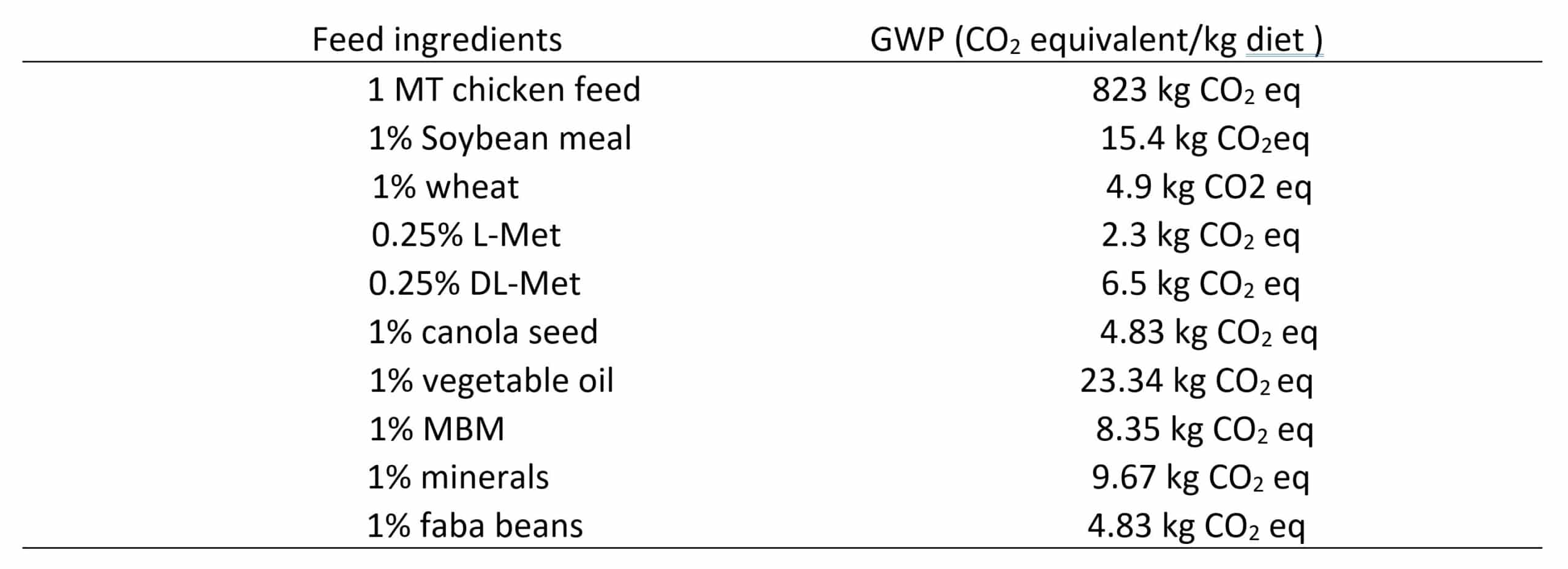
Table 1. The effect of feed ingredients on global warming potential (GWP)

Table 2. The effect of feed enzymes and chicken performance on GWP reduction
A study compiled by our Redox Animal Nutritionists.
Plant extracts are secondary plant metabolites, which are responsible for the odor and color of plants. Plant extracts are composed of more than a hundred components and in two different forms: liquid oil (essential oils) and solid powder. Plants extracts have been well considered to have anti-viral, antimicrobial, antioxidative, and anti-inflammatory effects.
Probiotics are categorized into 3 main groups:
- Bacillus,
- lactic-acid-producing bacteria, and
- yeast.
Bacillus-based probiotics are spore-forming and therefore thermal stable. Lactic acid producing bacteria are not spore-forming and survival is of concern during feed processing. It appears that lactic acid-producing probiotics are more beneficial for weanling pigs to help stabilize the gastrointestinal tract after weaning, whereas bacillus-based probiotics are more suitable for growing Ing-finishing pigs to increase the digestibility of nutrients in high fibre diets.
In piglets, Clostridium perfringens type C bacteria frequently cause necrotic enteritis that leads to mortality rates of up to 100%. Antibiotics treatments have no long-term effect due to antibiotics resistance.
Recently a natural plant extract combined with the spore-forming clostridium butyricum probiotics (Suimet B+) has been developed to prevent Clostridium perfringens type A diarrhoea and type C bacterial infections in pig production.
The application of Suimet B+ to 2,2 00 sows significantly reduced the sow mortality in the late gestation under heat stress conditions (Figure 1). 5 to 7 days after using Suimet+, the mortality rate has been significantly reduced.

Figure 1. Effect of Suimet B+ on sows’ mortality
For weaning piglets, adding Suimet B+ for about 40 days could increase body weight by 17% and reduced the mortality rate from 3.5% to 0.5% (Figure 2).

Figure 2. Effect of Suimet B+ on body weight and the mortality rate of weaners (day 62)
A study compiled by our Redox Animal Nutritionists.
N-3 long-chain fatty acids including α-linolenic acid (ALA,18:3n-3), Eicosapentaenoic acid (EPA, 20: 5n-3 and Docosahexaenoic acid (DHA, 22;6n-3), are essential fatty acids for salmon growth and health. They can not be synthesized by fish body and need to be provided by fish meal and fish oil or algae supplements.
ALA serves as a precursor to other important N-3 long chain fatty acids such as EPA and DHA but the conversion rate in the human body is relatively low. It is important for maintaining heart health, reducing inflammation, and supporting brain function. Plant feed ingredients such as flaxseeds and canola oil contain high levels of ALA.
EPA plays a crucial role in reducing inflammation, supporting hearth, and maintain mental health. DHA is vital for brain and eye development and function. It also supports heart health and cognitive function. Both EPA and DHA can only be provided by fish meal, fish oil and certain algae supplements.
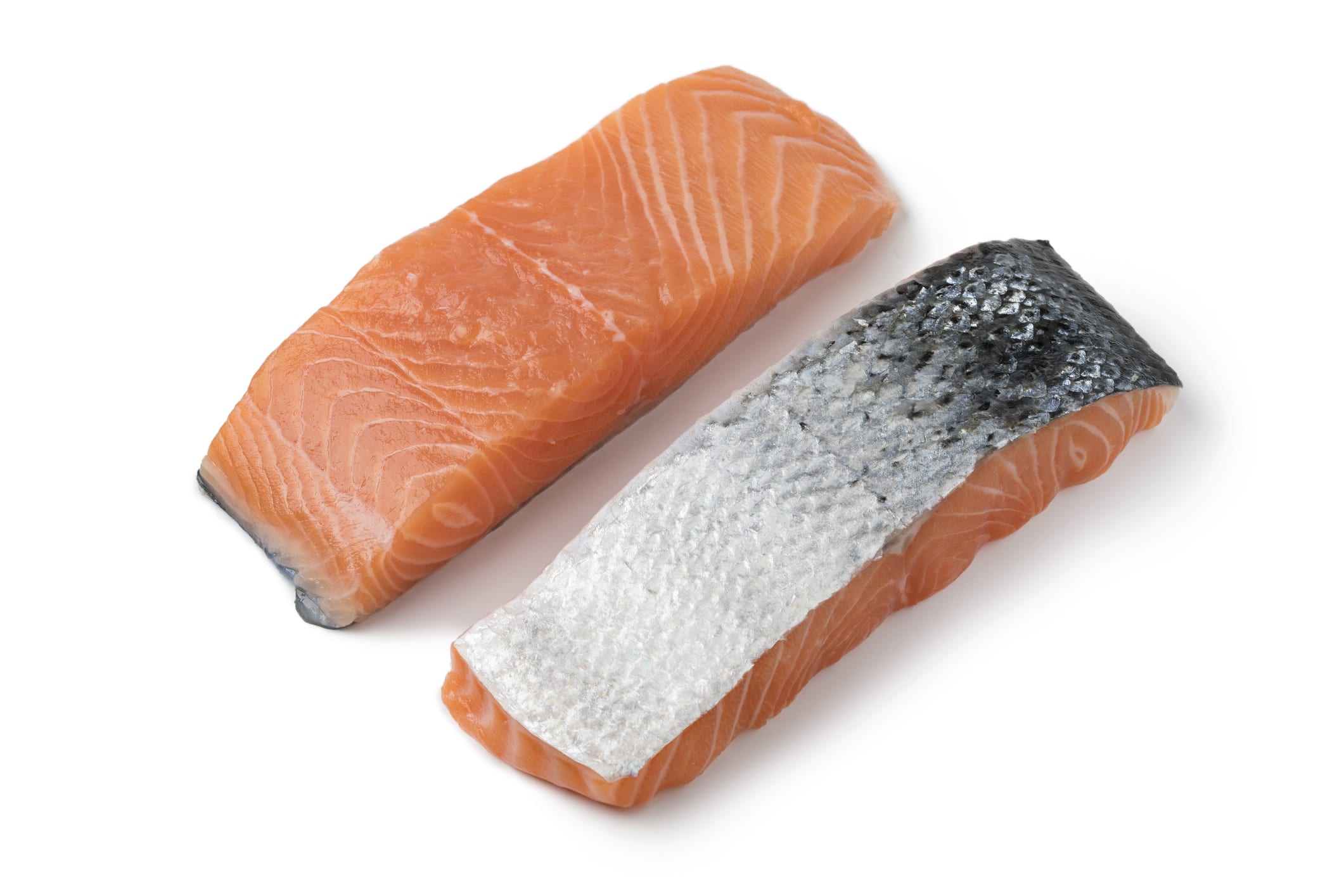
Salmon is naturally rich in EPA and DHA, key N-3 long-chain fatty acids. However, with modern salmon diets comprising only about 30% fish meal and fish oil, there is a potential risk of EPA and DHA deficiency in farmed salmon.
Salmon naturally contains high levels of EPA and DHA, making it a rich source of N-3 long-chain fatty acids. However, current diets for salmon only contain approximately 30% fish meal and fish oil, possibly resulting in EPA and DHA deficiency. In addition, recently it is reported that higher dietary concentration of N-3 long chain fatty acids might reduce sea lice infection and therefore, the requirement of N-3 long-chain fatty acids based on high level of plant-based ingredients needs to reconsider.
Based on the diet containing 35% fish meal and fish oil, Bou et al., 2017 indicated that extra 1.5% EPA or 2% DHA supplementation obtained best growth performance for salmon. Dietary concentration of 0.5% of EPA plus DHA is considered the lowest level for Atlantic salmon parr in Fresh water (Qian et al., 2020). Interestingly, the highest EPA:DHA ratio showed a lower number of wounded fish at the end of the grow-out period, implying that the partial replacement of fish oil with algae oil may achieve a balanced EPA:DHA ratio.
A study compiled by our Redox Animal Nutritionists.
Molds are filamentous fungi that occur in many feedstuffs including grains and forages. Molds can produce mycotoxins that are formed on crops in the field, during harvest, or during storage, processing, or feeding. The mycotoxins of great concern include aflatoxin (Afla), deoxynivalenol (DON), zearalenone (ZEN), T-2 Toxin (T2), and fumonisin (FUM).
Traditionally, maize was easily contaminated by mycotoxin. However, in a recent survey, 71% wheat samples were contaminated by DON in Australia. Therefore, the routinely use of mycotoxin binders may help ruminant animal to avoid exposure to low levels multiple mycotoxins, considering that these binders could bind mycotoxins strongly enough to prevent mycotoxin absorption across the digestive tract.
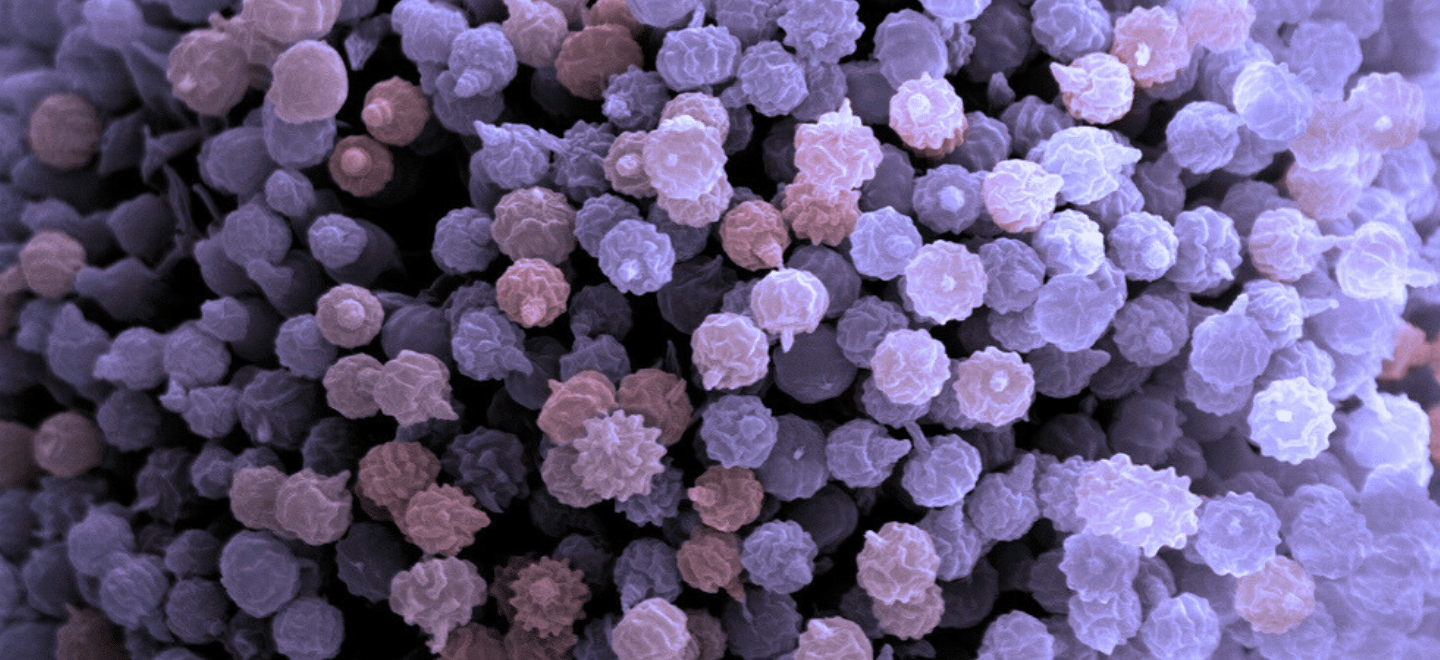
Maize has long been known for its susceptibility to mycotoxin contamination. Surprisingly, a recent Australian survey found that 71% of wheat samples were contaminated with deoxynivalenol (DON).
Potential binders include activated carbon, bentonite, zeolite, diatomaceous, earth, cellulose, yeast cell wall polysaccharides, and synthetic polymers such as cholestyramine and polyvinylpyrrolidone.
Activated Carbone: it is a general adsorptive material with a large surface area and excellent adsorptive capacity. It is routinely recommended for various digestive toxicities at 30-50 g per day per cow. previously, it was suggested that Activated Carbone may not be as effective in binding Afla as bentonite or zeolite. However, in a recent in vito trial, it shows an overall better adsorption capacity except for T2 with the lower adsorption capacity.
Bentonite: it is a hydrated sodium calcium aluminum magnesium silicate hydroxide and usually is used as anti-cake agent at 1 to 2% of cattle diets. Based on the recent in vitro trial, it only shows higher adsorption capacity for Afla.
Zeolite: adding 250 to 500 g zeolite per day per cow has been approved to prevent ‘milk fever’. In a recent in vito trial, it also shows a similar adsorption capacity for Afla, T2, and Zen.
Diatomaceous earth: it is usually used as an insecticide on stored cereals and storage rooms. 1% to 2% feed grade diatomaceous earth has also been recommended to add to cattle feed to reduce internal and external worm or parasites. Diatomaceous earth has also shown the potential in vitro to bind Afla.
Yeast cell wall polysaccharides: the outer layer of the cell wall constituted with glucomannan and mannon proteins that determine the superficial properties of the yeast cell wall. The adsorption capacity increases as the proportion of β-D glucans present in the yeast strains increases. However, in a recent in vitro trial, the yeast cell wall product for this trial showed the much lower adsorption capacity compared with the activated carbon.
In general, these mycotoxin binds are helpful to reduce the biavailability of mycotoxin. However, it is difficult to select the appropriate adsorbent for each mycotoxin.
A study compiled by our Redox Animal Nutritionists.
Yeast supplements include live yeast, yeast cell wall (YCW), purified outer layer of cell wall components such as mannooligosaccharide (MOS) and β-glucans, purified inner layer of cell wall, and yeast extract products. It is generally accepted that yeast products can improve pig gut health via improved gut integrity and maintenance of a healthy microbiome, leading to increased nutrition absorption, and thus improved overall pig performance.
Live yeast refers to yeast cells that are still alive and active. It is often used to improve digestion and promote gut health for ruminant animals.
After autolysis (using the yeast’s own enzymes) or hydrolysis (using added exogenous enzymes), the yeast extract and cell walls are separated using centrifugation before being dried. Usually, the yeast extract via autolysis contains higher levels of yeast nucleotides. However, the yeast extract via hydrolysis is more applicable due to a low salt concentration.
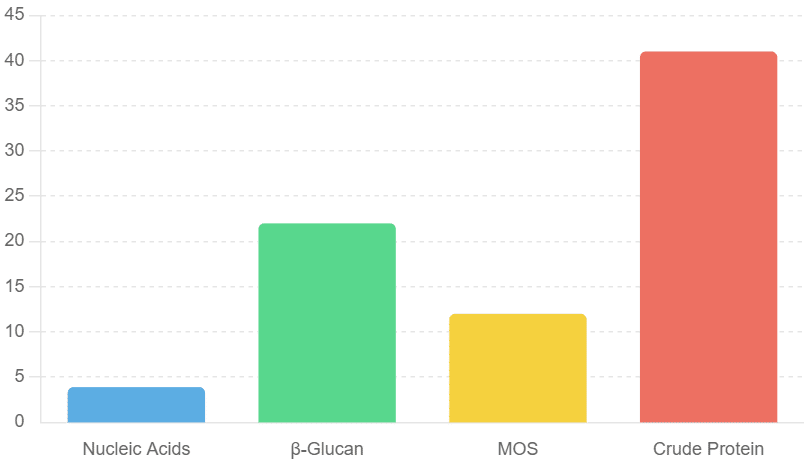
The composition of autolyzed yeast (AY)
The composition of autolyzed yeast (AY) has been summarized as 3.5-3.9% nucleic acids, 11-22% of β-glucan, 3-12% MOS, and 30-41% crude protein. Adding 0.2-0.5% AY to pig diets could improve the performance and immune function of weaned and finished pigs.
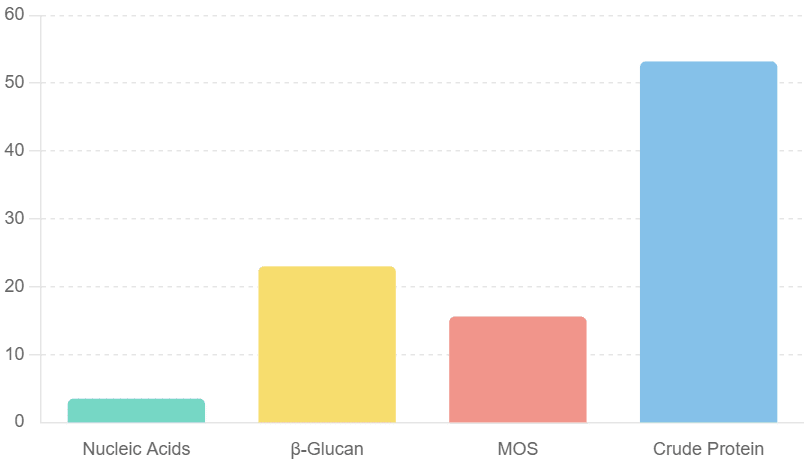
The composition of hydrolysed yeast (HY)
The composition of hydrolysed yeast (HY) includes 3.5% nucleic acids, 22.43-23% β-glucan, 15-15.6% MOS, and 40-53.2% crude protein. The effective inclusion rates of HY in diets for the weaned, grower, and finisher periods are 0.1-0.2%, 0.05-1.0%, and 0.1%, respectively.
The yeast cell wall fraction is mainly composed of polysaccharides, making up 15 to 30% of the dry weight of the whole cell. The inner layer of the cell wall mainly contains β-D-glucans which is used as the organic mycotoxin binder. Supplemental levels of the mycotoxin binder are recommended around 0.1 to 0.2%
The outer layer of the yeast cell wall is made of MOS and β-glucans. Adding purified β-glucan to early weaned piglets dets showed protective effects against E Coli infection by reducing bacterial excretion and diarrhoea. The recommended dosage of β-glucan is 100-200 ppm or 100 -200 g/MT feed. The purified MOS can attach the bacterial surface, and then protect the colonization of bacteria in the intestinal tract. Supplementation of MOS in the range of 500 to 1000 ppm or 500 g to 1 kg /MT feed.
In addition, approximately 1-20% of total nitrogen in yeast are derived from nucleic acids. Nucleotides are significantly required by cell replication process, particularly intestinal epithelial and lymphoid cells. Nucleotides are also important in immune system maintenance and prevent oxidative stress. The purified Nucleotide inosine monophosphate (IMP) is commercially available and recommended supplemental levels are ranged 500 ppm to 1000 ppm or 500 to 1000 g/Kg feed.
A study compiled by our Redox Animal Nutritionists.
The global shipping industry is grappling with significant disruptions, exacerbated by the Houthi Red Seas attacks and an unprecedented surge in demand. Experts suggest the current situation could prove even more challenging than the COVID-19 pandemic.
One of the major players in the shipping industry, Maersk, has introduced a Peak Season Surcharge, a measure they did not implement during the height of the COVID-19 crisis. The surcharge rates are substantial:
- US$500 per TEU (twenty-foot equivalent unit) from North Asia to Australia,
- US$300 from Southeast Asia to Australia, and
- US$300 from Asia to New Zealand.
The market has seen a jump of over US$1000 per TEU, indicating severe price hikes across the board.
Adding to the strain, Maersk has significantly reduced its allocation from Southeast Asia due to underutilisation earlier this year. While other carriers are temporarily absorbing the excess demand, this presents an ongoing risk to logistics stability.
Transhipment Port Congestion
Transhipment ports, which typically operate smoothly, are now experiencing severe congestion, causing further delays. Cargo that requires transhipment is at high risk of being stuck for extended periods.
Additionally, moving dangerous goods (DG) through certain ports has become increasingly problematic. Recent reports indicate that congestion in Singapore has now surpassed levels seen during the COVID-19 pandemic, compounding the delays.
Equipment Supply Shortages
With more containers spending longer periods at sea, the availability of empty containers at specific ports has sharply decreased. This scarcity of containers is another critical issue with no immediate solution in sight.
Increasing Lead and Shipping Times
Space for shipments from Asia to Australia is currently unavailable until the second week of July, indicating a six-week lead time. The ongoing vessel bunching and transhipment issues suggest that transit times will continue to lengthen in the coming months. While shipments from Southeast Asia to New Zealand are relatively stable for June, the overall outlook remains uncertain.
The Situation in the USA
In the United States, there is growing concern about the return of the US$10,000 container. Shipping rates are increasing by US$1000 per week, with no clear ceiling in sight. The industry is scrambling for solutions:
- Though space is limited, non-dangerous goods rates are available from Xingang and Qingdao to Oakland, Long Beach, Chicago, Newark, and Jacksonville. Suppliers should consider alternative ports and discuss local logistics options with sales representatives.
- Investigating local North American producers and considering road or rail freight across the continent may offer cost-effective alternatives.
For more details on these developments, you can refer to the following articles:
- Maersk Peak Season Surcharge
- Port Congestion Returns to Haunt the Container Markets
- The $10,000 Shipping Container Looms in Latest Trade Strains
The global logistics landscape is facing a critical juncture, and stakeholders must adapt swiftly to navigate these challenges effectively.
Yucca schidigera is an herbaceous plant of lily family, native to the deserts of the southwestern United State and northern Mexico. It contains two active compounds: at least 10.5% steroidal saponins and polyphenols. Saponins are similarly in structure to Glucocorticoids in animals.
Previously It was thought that the Yucca extract could bind ammonia and therefore reduce its emission from pets and other animals. However, ammonia concentrations in the gut are at least 100-fold greater than the concentrations of the yucca extract. Currently it is believed that the high circulating levels of Glucocorticoid in response to various oxidative stress including heat stress result in enhanced degradation of amino acids to generate ammonia and reduced protein synthesis in skeleton muscle.
Under conditions of the oxidative stress including heat stress, the Yucca extract can block the bonding of glucocorticoids to their receptors in cells. Thus, the yucca extract could alleviate the oxidative stress including heat stress and reduce ammonium emission in the stress situation (Table 1). When broiler chickens were housed at an average ambient temperature of 24˚C, dietary supplementation of Yucca extract (120 ppm and 180 ppm) did not affect the feed intake or body weight gain (Wu, 2018). However, in table 1, when the ambient temperature was naturally elevated from 27˚C to 37˚C, the Yucca supplementation improved body weight gain by 38-43% and FCR 46% to 52% compared with the control group.
Table 1 The effect of the addition of the Yucca extract on broiler chicken performance under the heat stress
Yucca saponins also have anti-protozoal activity by supressing protozoal infection of the intestine. It is reported that Yucca saponins could bind with cholesterol in protozoal cell membrane and destroy the integrity of the protozoal membrane. Coccidiosis is one of the main challenges for the worldwide poultry industry. Although coccidiostats are often rotated, the poultry industry is challenged by resistance of the Eimeria parasites to these treatments. In a recent trial conducted in the Europe, Kozlowski et al (2022) reported that both the anticoccidial and 500 g/Mt Yucca supplementation showed significant improvement in body weight (2150 g and 2058 g vs. 1998 g, Table 2)
It is now also reported that Yucca polyphenolics have anti-inflammatory activity and could prevent arthritis. The generation of reactive oxygen species such as nitric oxide is an important factor in the development of rheumatic arthritis. Yucca polyphenolics may inhibit nitric oxide production and prevent arthritis.
Table 2. The effect of supplemental Yucca extract on challenged chicken performance (d1-35)
A study compiled by our Redox Animal Nutritionists.
Rumen protective choline (RPC) is a double coated form of choline designed to withstand the microbial degradation in the rumen. RPC product feature is shown in Figure 1. Supplementation of RPC in dairy cattle has been shown some positive effects on milk production and cow health.

Figure 1. RPC production feature
RPC supports the liver’s function, particularly during the critical transition period, helping cows to use energy more efficiently and prevent fatty liver syndrome. It also plays a role in the transport of nutrients across cell membranes, in the blood stream and mammary gland. Recent studies in USA indicated that addition of RPC in the transition period could increase 2 kg milk production per day per cow.
Interestingly this effect could carry over the entire 40 weeks (280 days) of lactation period. Possibly the better health in the transition period by adding RPC extended the life span of the mammary cells or reduced the rate of cell death in the mammary gland.
Previously it was thought that RPC was a nutrient that would be fed only to fat, over conditioned cows. It is now believed that supplementing RPC to a low body condition score cow also increases milk and colostrum production.
Commercially, two experiments were conducted in China. In trial 1, during 21 days before calving to 21 days post calving period, 50 grams of Meno-Pro (RPC) were fed to 25 dairy cows per day per cow. Another 25 dairy cows were not supplemented with RPC as the control group. The milk production in 7 weeks of lactation period is shown in Figure 2. Within 7 weeks, adding RPC increased total milk yield by 1482 kg for 25 dairy cows. Average milk yield increased by 1.21 kg per day per cow.
In trial 2, during 21 days before calving to 21 days post calving period, 50 grams of Meno-pro (RPC) were fed to 50 dairy cows per day per cow. Another 50 cows were not supplemented with RPC as the control group. The milk yield in 42 weeks of lactation period is shown in Figure 3. Averagely, the addition of RPC only in the transition period could increase total milk yield 442 kg per cow.

Figure 2. Effect of RPC on milk production in 7 weeks of lactation period

Figure 3. Effect of RPC on milk production in entire lactation (42 weeks) period
A study compiled by our Redox Animal Nutritionists.
It is well known that in the current floor pen with deep litter system, day old broiler chickens could benefit from non-starch polysaccharides components in the litter to establish the dynamic microbiota. However, when the intestinal microbiota becomes complex and diversified over time and environmental conditions, long term exposure to faeces and ammonia pollution environments has a higher risk of infection with pathogenic bacteria and parasites.
For decades, chicken enteric disease including necrotic enteritis (NE) and coccidiosis have been controlled by using antibiotic growth promoters (AGP) and coccidiostats. However, due to the development of antibiotic resistance in bacteria and coccidiosis, which is a threat to animal and human health, the use of AGP and coccidiostats has been restricted or banned in the poultry industry. Thus, alternatives production strategies including vaccinations, organic acids, prebiotics, probiotics, essential oils, postbiotics or yeast peptides to control NE and coccidiosis have been explored.
The Glucose Oxidase (GOD) is exogenously produced by specific fungi fermentation to oxidize β-D-Glucose into gluconic acid and hydrogen peroxide, consuming large amounts of oxygen at the same time in the chicken gut. Therefore, it can protect against oxidative stress and directly kill some pathogenic bacteria or Eimeria parasites. Gluconic acid is a kind of organic acid, which acts as an acidifier in the intestine to produce the short chain fatty acids such as butyric acid. GOD also plays an important role in colour development, flavour, texture, and increasing the shelf life of food products. Due to its characteristics of producing natural acid, deoxygenation and sterilization, GOD has been defined in AAFCO list as 70.3 and widely used in animal production.
Recently, the University of New England (UNE) conducted a NE challenging trial to investigate the GOD potentials to ameliorate the impact of NE on chicken performance and intestinal health. The standard, positive controls (PC) were formulated based on wheat-sorghum-soybean meal as the commercial diets. Negative control (NC) chickens were challenged with Eimeria parasites at day 9 and clostridium perfringens at day 14. Another 4 treatments consist of PC or NC diets supplemented with antibiotics, GOD 100 g/MT, 200 g/MT and 300 g/MT, respectively.
The effect of GOD on chicken performance before challenging was shown in Figure 1. It is clearly shown that adding GOD significantly improved chicken body weight gain by 9% and FCR was improved by 10 points. From the growth point of view, AGP supplementation did not show any impact on chicken body weight gain and FCR.
However, during the challenging period (Figure 2), AGP significantly improved the chicken body weight gain and FCR compared with the positive control. Interestingly, during the recovery period (Figure 3) or chickens had the longer-term exposure to faeces and ammonia pollution, chickens in positive control and supplemented with the lowest GOD showed worst performance, but chickens in the negative control showed the best performance, possibly due to that Eimeria challenged birds boomed their immune system for the possible coccidiosis infection. It might also imply that supplementation of GOD could replace both coccidiostat AGP.
However, the lower level of GOD might have the negative effect of Eimeria vaccination.

Figure 1. The effect of GOD on chicken performance before challenging.

Figure 2. The effect of GOD on chicken performance during challenging.

Figure 3. Efeect of GOD on chicken body weight gain after challenging period (d 28-35)
A study compiled by our Redox Animal Nutritionists.
Our Partnering Manufacturers
